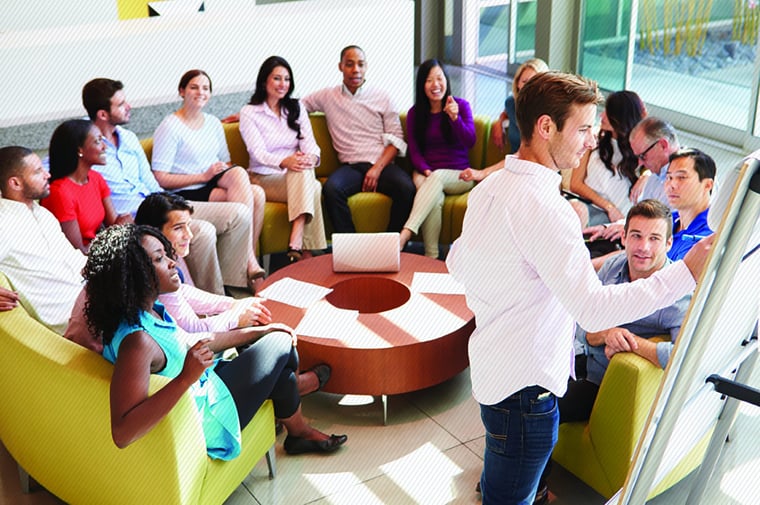Sooner or later, every company has a come-to-Jesus moment where it’s suddenly, painfully clear that the organization has gone off track. In some cases, it’s when a company that prided itself on innovation starts cutting prices in a desperate bid to goose sales. That strategy can lead to a death spiral as profits shrink, prompting investors to sell or stay away.
In other cases, it’s churn, customer-satisfaction scores or industry rankings that show it’s time to return to the vision that made you successful or find a new one. Either way, the companies that get back on track, or never off track in the first place, have one thing in common: They rally around the customer experience. Here are three examples.
Sprint: From Worst to First
Between 2005 and 2008, Sprint consistently ranked last among major mobile operators in J.D. Power & Associates’ customer service surveys. The primary reason for this was customer issues driving calls into customer service, resulting in extremely long hold times. A new CEO was brought in to get Sprint back on track.
“We weren’t talking about the customer when I first joined,” Sprint CEO Dan Hesse told BusinessWeek in February 2008. “Now this is the No. 1 priority of the company.”
Lip service doesn’t wow customers, so Hesse had frequent meetings with his direct reports across all functional areas (sales, marketing, service, product, network) to resolve the root cause of issues causing customers to call Sprint. “Every staff meeting starts off with discussing the customer experience,” Bob Johnson, Sprint chief service officer, said in 2010. “We analyze the data and see where the pain points are and work to improve them.”
Exactly three years later, Sprint rebounded to become the J.D. Power 2011 Customer Service Champion after 12 consecutive quarters of improving customer satisfaction and first-call resolution. That streak continues: The 2013 American Customer Satisfaction Index ranked Sprint as the most improved company in customer satisfaction, across all 47 industries studied, during the previous five years.
Just as important, the customer satisfaction improvement flowed directly to the bottom line – to the point that Sprint saved over $1 billion in operating costs and had so much excess contact center capacity that it was able to close half of them.
Sprint’s turnaround is noteworthy because it put the customer experience first. That included addressing the root cause for most of those complaints: its network, whose quality it improved by plowing billions into upgrades. Other companies often try to reduce the cost of customer care by using IVRs and other automation to minimize use of the more expensive alternative: speaking with a live agent. That strategy often backfires when the automation winds up frustrating customers instead of speeding them to the right answer.
At some companies, it’s rank-and-file employees or analysts who provide the wake-up call. Sprint is an example of how the rallying cry sometimes comes from the C-suite. Either way, acknowledging the problem is the first step. The next is getting everyone else on the same page.
Blue Cross Blue Shield of Michigan: Hands-On Experience Creates Empathy
Some companies use lifesize cardboard cutouts depicting their major customer personas to ensure that every employee is focused on the customer experience. Blue Cross Blue Shield of Michigan (BCBSM) went a few steps further.
First, it put those cutouts all over its corporate offices, making it tough for anyone to overlook them or what they stood for. Next, it created an interactive persona room so employees could have the kind of hands-on experiences that would lead to better customer understanding and empathy. For example, employees could put on scratched-up glasses to understand why older customers with vision problems may struggle to read a billing statement and other collateral.
BCBSM’s customer experience persona room was mobile, visiting 10 offices in 90 days. The initiative won the Customer Experience Professionals Association 2013 CX Innovation Award, which recognizes programs that have a strong business impact and advance the customer experience field.
“BCBSM created a way for thousands of employees to truly understand their different customers as human beings, and they did it in just three months,” said Yvonne Nomizu, leader of the CX Innovation Awards Committee. “Instead of describing the customer in just words, employees got to know their customers through physical objects, audio tapes, interactive digital stations, visuals and maps.”
“We had never seen anything that was so impressive and oriented around employees learning and participating, not just understanding. The result was that BCBSM built a markedly stronger employee commitment to the customer experience.” This is a great example of leadership commitment to rally the entire company to better understand and improve the customer experience from the ground up.
Starbucks: Customer Experience Doesn’t Come at the Expense of Profits
Sure, it’s tough to make and keep the customer experience the No. 1 priority when investors and analysts are clamoring for fatter margins. But Starbucks shows it can be done. It believes its success hinges on providing the experience of being in a small café: the smells, the sounds, the service, with no “Want fries with that?” upselling.
In fact, Starbucks shows how to upsell without a hard sell. In first quarter 2014, U.S. same-store sales increased 6 percent largely because breakfast sandwiches, juice and other products were flying off shelves. “The single largest contributor to the comparable sales growth in the quarter was food,” COO Troy Alstead told Bloomberg. “It resonates with customers.”
It resonates so much that Starbucks raised its profit target for the year, which shows it’s possible to please both customers and investors. When looking for top line growth, companies should look to implement new products and services that enhance the experience for their customers. As one customer put it, “Starbucks has won me for life, not based on their product or their pricing but on their customer service.”
Are your customers saying the same thing? If not, it’s time to rally.
If you're ready to improve the customer experience at your organization, request a consultation to speak with one of our experts.



